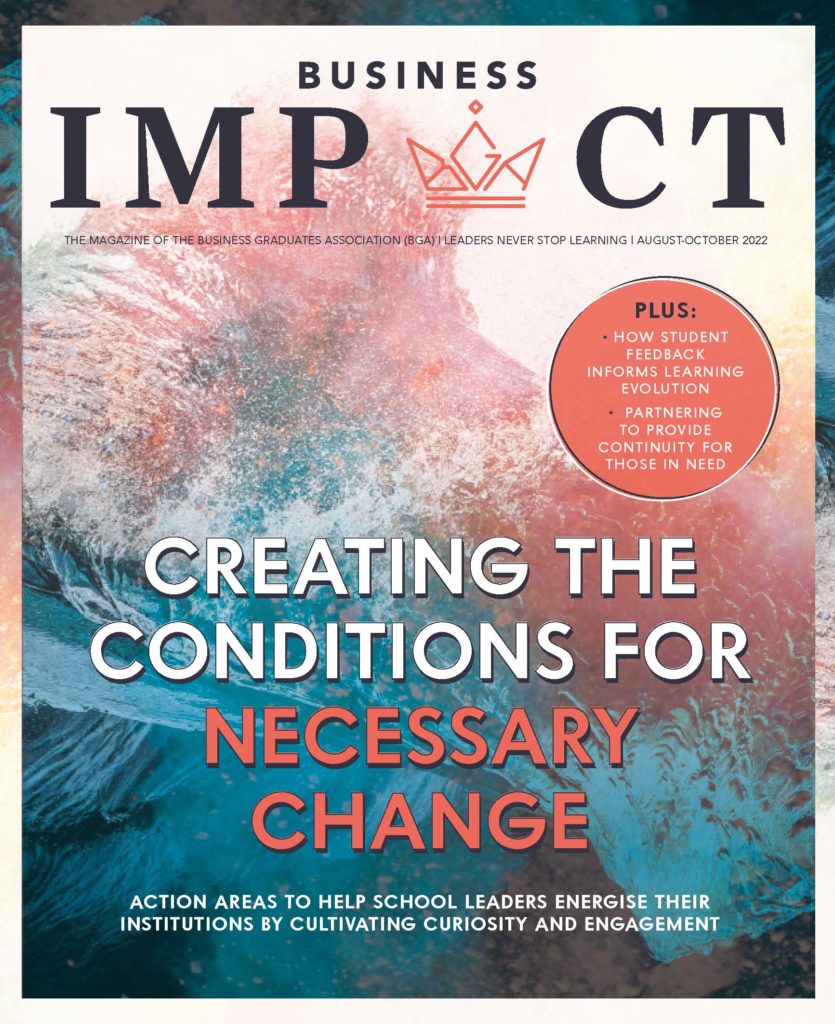For business schools to meet new student needs, the actions outlined in the last part of this article series (Creating cultures of change, part III) will go some way to responding to the ‘what’. But, we also know from experience that most large-scale change initiatives fail at some level – and as has also been explored in the book, Organization Development, by Mee-Yan Cheung-Judge and Linda Holbeche.
Therefore, if business school leaders are to deliver this new agenda, they will need to focus as much on the ‘who’, ‘why’ and ‘how’ as the ‘what’. These are the factors that build the internal culture to make change happen. How is this done?
I believe the key is to develop an effective ‘Change Mindset’, as covered in my book of the same name, to respond to the current uncertainty. There are four key action areas in which business schools can do this:
1. Identity – reinventing the brand (who we are)
- Why change is needed – to respond to educational megatrends and attract future students through a more compelling identity
- How leaders can respond – by creating a clear view from the top that answers the questions:
– What do we stand for?
– How are we relevant to today’s learners?
– What is our customer/learner experience?
– How will we prepare leaders for the future of work?
2. Content – adapting instructional design to new learner needs (what we offer)
- Why change is needed – students want new learning formats and more relevant content through a differentiated offer that provides new learning experiences
- How leaders can respond – by restructuring their learning offering to match new external realities:
– Wider content reflecting topics from sustainability to ESG, AI, and DE&I
– Smart hybrid learning that leverages virtual, face-to-face and experiential formats
– New structures that offer customisation for both groups and individuals
– New partnerships that offer complementary knowledge and learning
3. Culture – creating the conditions for innovation (how learners will experience us)
- Why change is needed – learners want to partner with more innovative institutions with cultures that excite and engage them, the faculty and staff
- How leaders can respond – by building energy about new possibilities and creating permission to change:
– Build a change mindset to open up people’s minds to the value of change
– Create psychological safety to encourage experimentation and change
– Practice curiosity and use positive framing to encourage action
– Entertain ‘ridiculous ideas’ that push current thinking to innovate
4. Purpose – creating a new business model and purpose (why we exist and our aspiration for impact)
- Why change is needed – learners need a clear and compelling reason to choose you, based on a clearly stated purpose and business model
- How leaders can respond – start by examining the school’s history and attributes to then build on those strengths to refresh and reinvent the learner experience:
– Build on legacy successes (reputation, impact, innovation) to refresh purpose
– Build new content and capability that will enhance the core purpose
– Create flexible business models (pricing, learning structures, certifications)
– Build wider ecosystems through partnerships, experts and competitors
Enrolling and engaging in the change
This series of articles has looked at how leaders of business schools, and their faculty, can remain relevant and profitable in a post-pandemic world, when at the macro level postgraduate education is at a crossroads.
Teaching methodologies and content are clearly in need of a refresh to meet emerging learner requirements, but equally important are the cultural elements required to enrol and engage faculty and staff in the change.
This is easier said than done: change requires clarity within each business school about who that business school is, what it does, how it is delivered and why change is needed. Contradictory, yet complementary, skills are needed for this: hard skills such as courage will get things done while softer skills, like empathy, are critical to bring others on the journey.
If it is reframed as an opportunity to meet the real, emerging needs of students and clients, a change mindset can unblock the threat response so often encountered in business at times of transition, especially when externally imposed.
With a refreshed vision and purpose, an updated learning curriculum, and the culture to support change, business schools can bring their institutions successfully into the 21st century. The key starting point is for leaders to create the conditions for curiosity, engagement and action towards an envisioned future that energises and enables the institution and its faculty to embrace and drive the change it needs.









